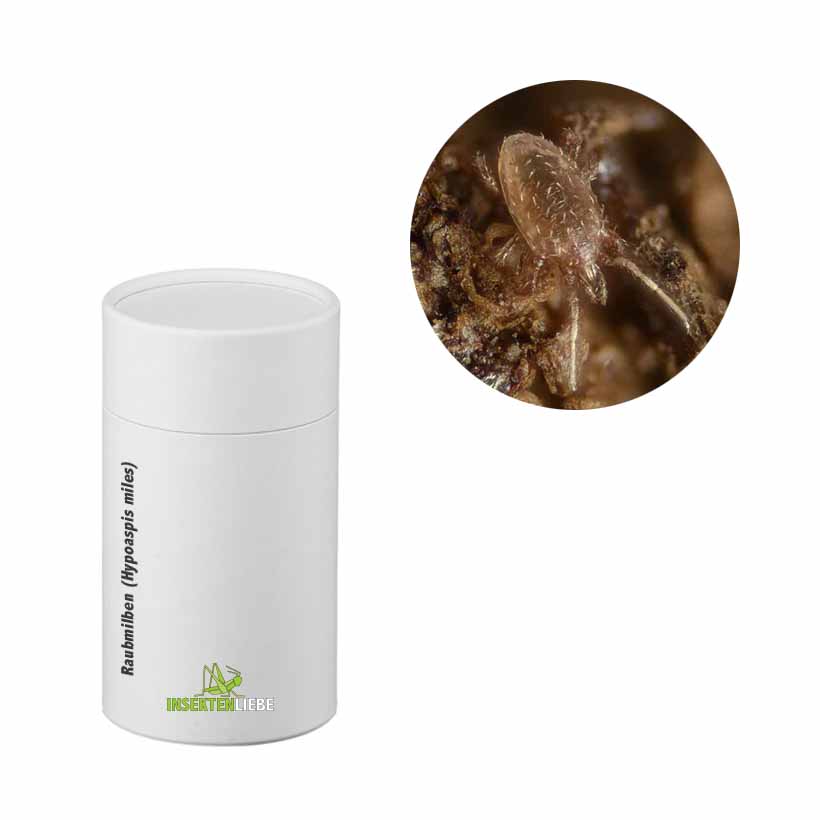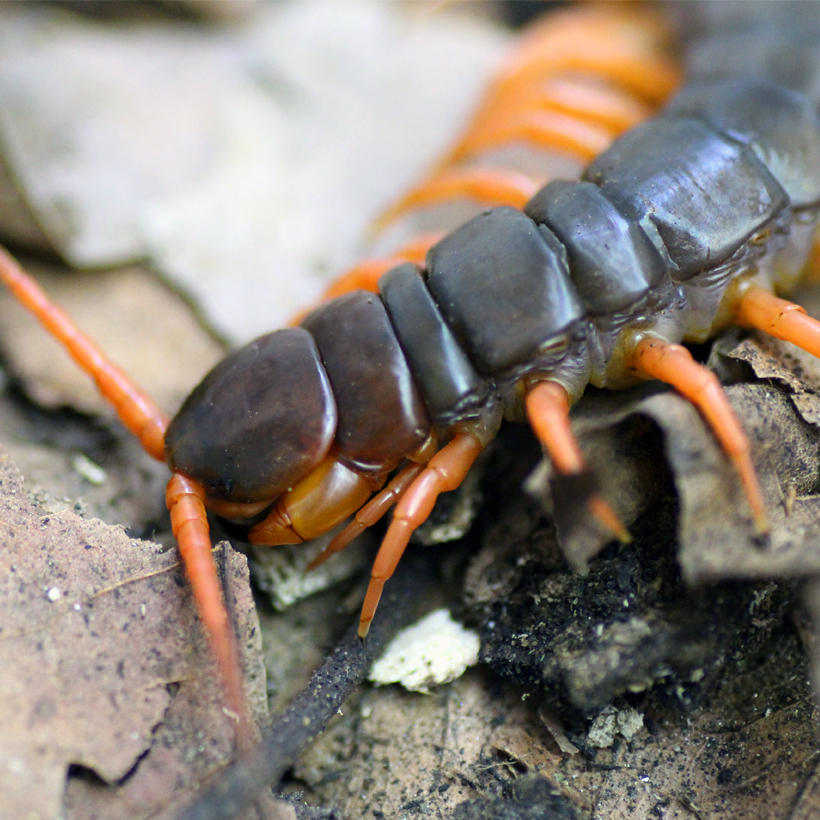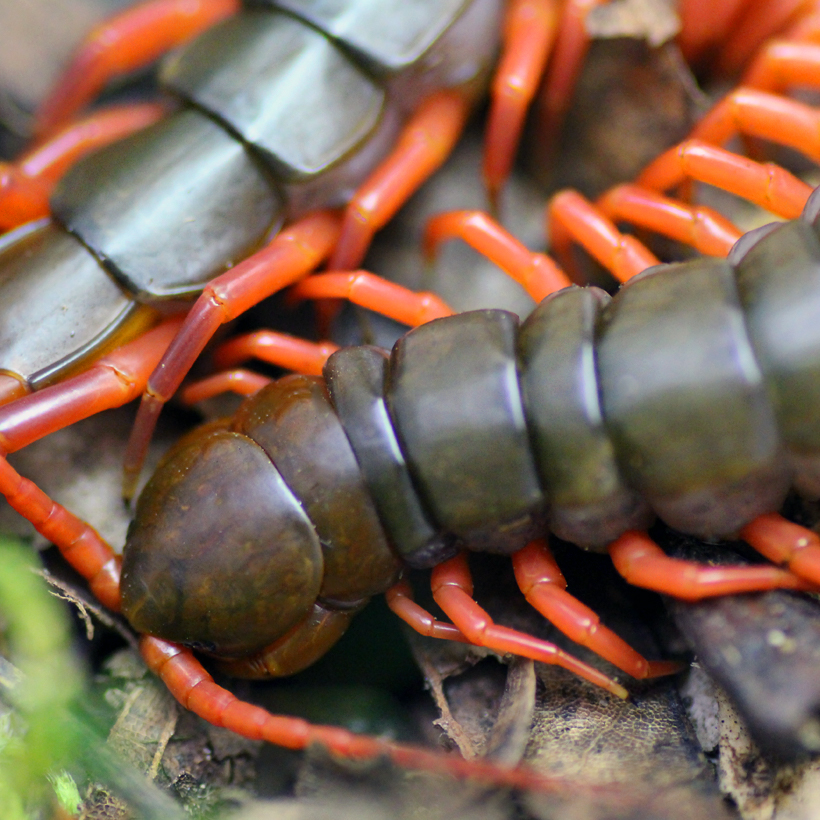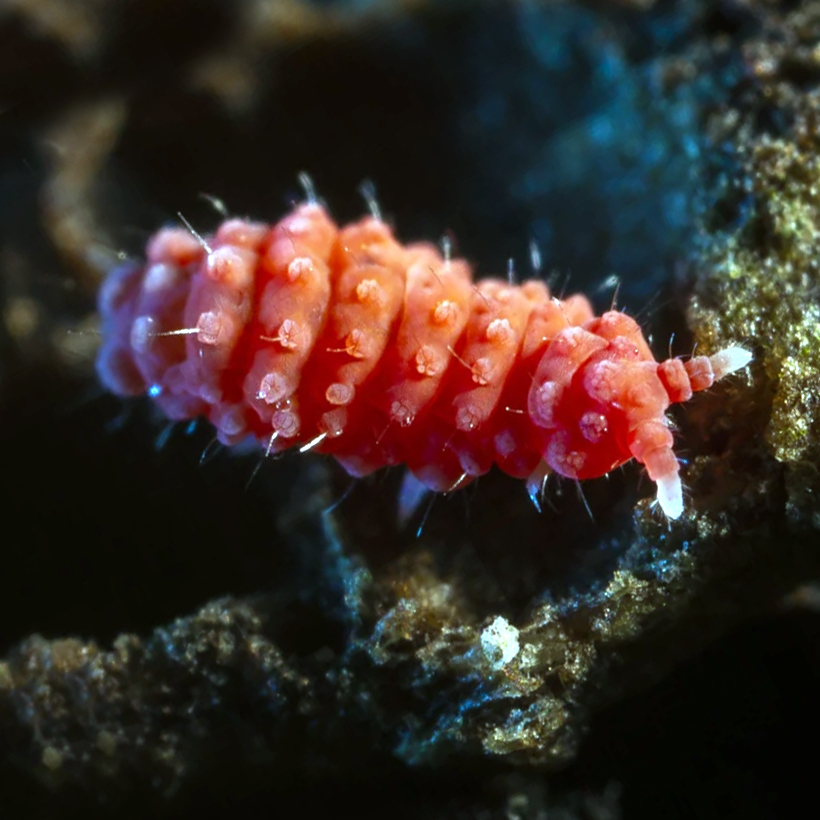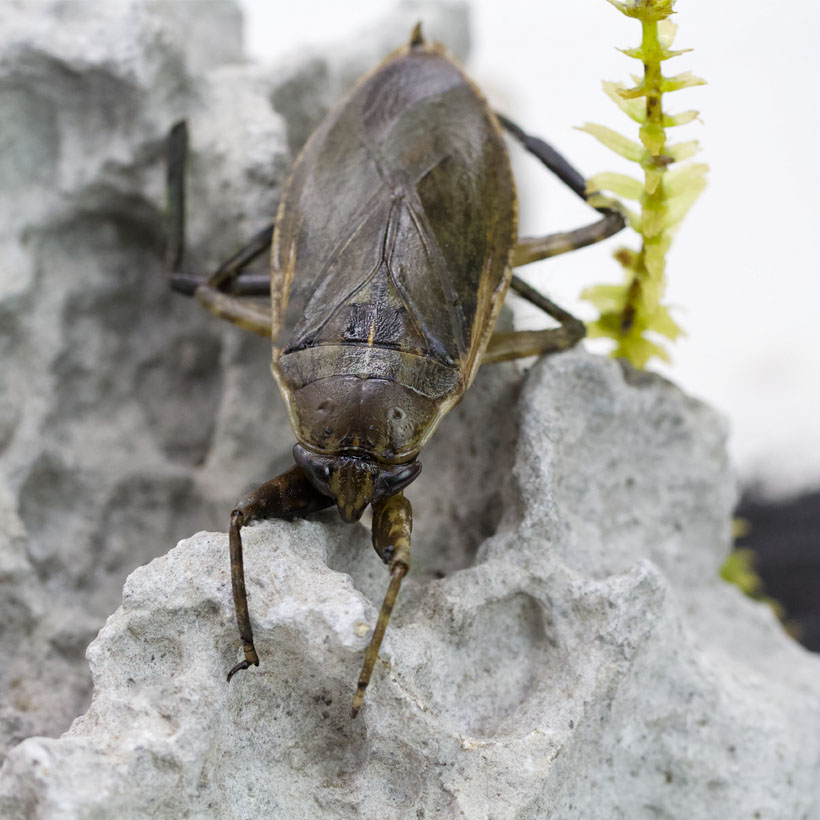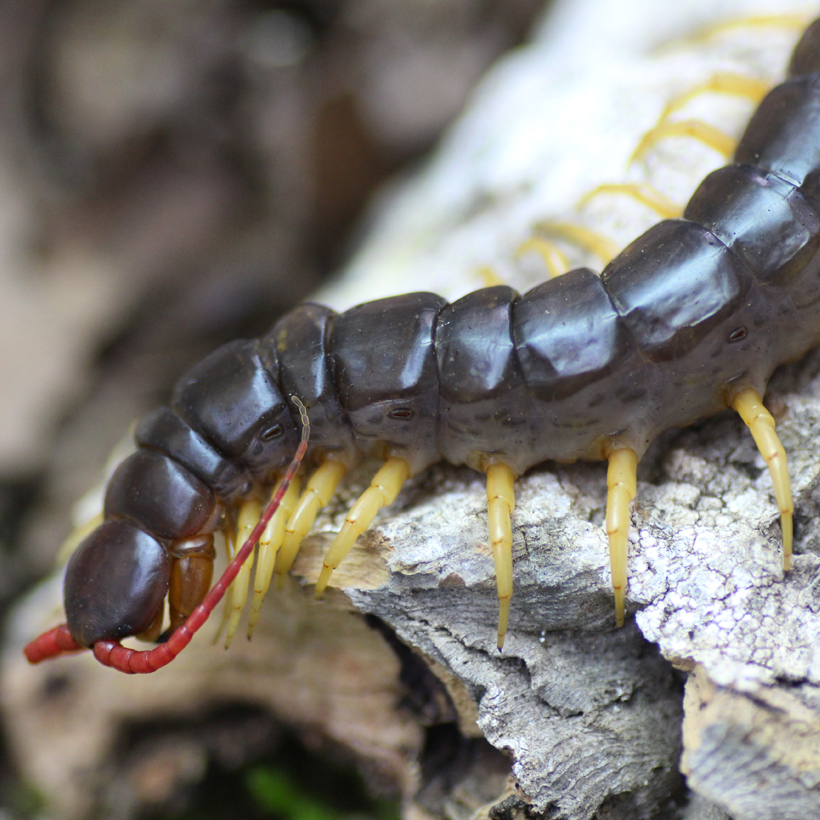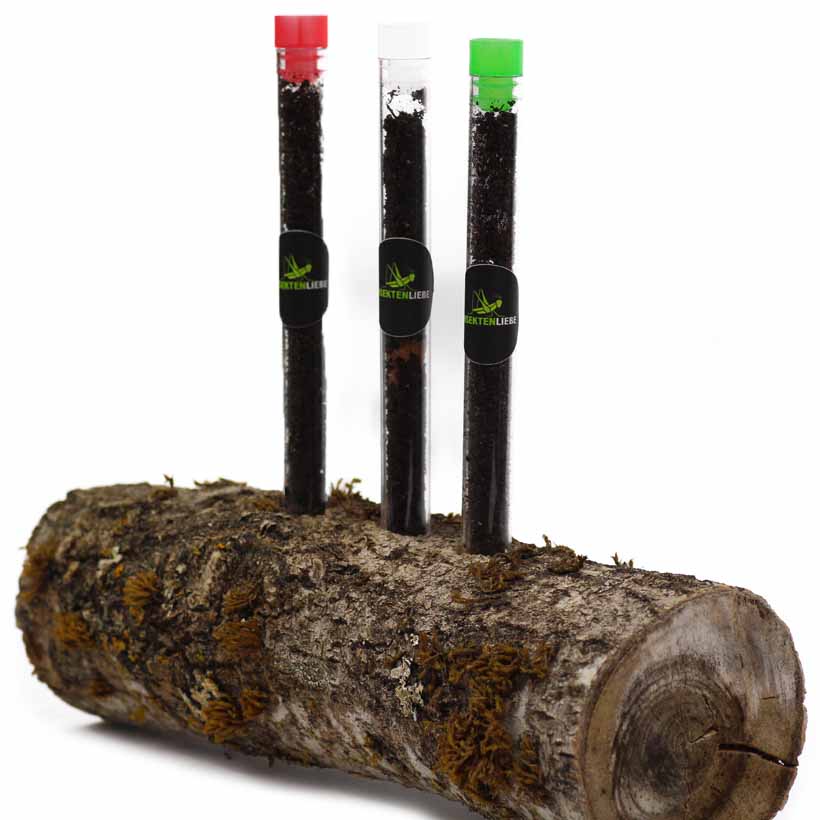Your cart is currently empty!
Predatory mites (Hypoaspis miles)
Sales Unit: 1000 animals
Cosmopolitan
< 1 mm
15°C – 30°C
Brief description Predatory mites (Hypoaspis miles):
Predatory mites pose no danger to millipedes, Isopods or other inhabitants of the terrarium. They concentrate exclusively on combating unwanted pests such as mites and fungus flies. Your terrarium inhabitants therefore remain safe and unharmed.
Predatory mites (Hypoaspis miles) are an excellent choice for controlling mites in terrariums. Predatory mites have numerous advantages over other species and are able to completely eliminate the population of pests. Another advantage is their ability to go without food for long periods of time, which is particularly beneficial if the mite species you want to control has a long incubation period. In addition, Hypoaspis miles can also be used against fungus gnat larvae in the terrarium and are excellent hunters that are able to control all larval stages of fungus gnats.
The predatory mites (Hypoaspis miles) search the entire terrarium in search of prey and eat the fungus gnat larvae before they can develop into pupae. However, it should be noted that they do not attack pupae and are therefore unable to control fungus gnats that have already hatched. In this case, additional yellow panels should be used to catch adult fungus gnats and reduce the population.
Predatory mites (Hypoaspis miles) can also hunt springtails as prey, but these are more difficult to capture due to their speed and defensiveness. For this reason, they do not achieve complete eradication. Hypoaspis miles do not pose a threat to larger species such as white Isopods, as the young Isopods are already too large for the predatory mites.
To summarize, predatory mites (Hypoaspis miles) are an excellent choice for effectively controlling mites and black flies in the terrarium. Hypoaspis miles are extremely hardy and can be used in various terrarium environments. They help to ensure that the terrarium remains free of mites and fungus flies, thus providing a healthy environment for the animals living in it.
Contents:
1,000 predatory mites in vermiculite
Application:
The contents can be distributed over several terrariums (up to 2m2). Simply divide the contents of the cardboard box between the terrariums.
Shelf life:
It is best to place the predatory mites directly into the terrarium. Predatory mites should be kept at a storage temperature of 8-10°C for a maximum of one week. As they are supplied without food, they begin to decimate each other in the packaging.
Delivery condition:
We receive a fresh delivery every week!
Predatory mite orders are only dispatched on Tuesdays.
